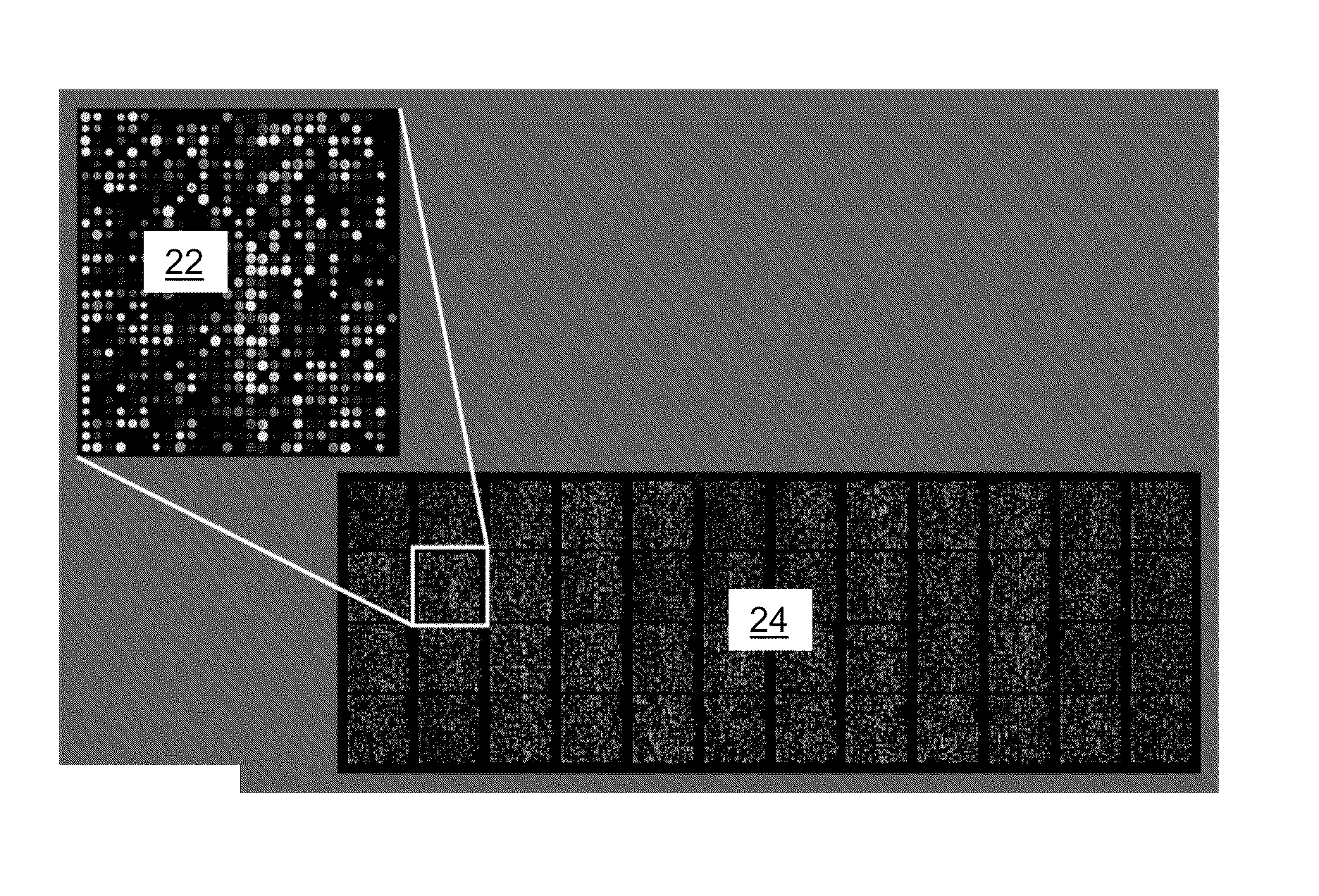DNA Microarray for Quantitative Detection of Microbial Processes in the Oilfield
- Summary
- Abstract
- Description
- Claims
- Application Information
AI Technical Summary
Benefits of technology
Problems solved by technology
Method used
Image
Examples
Embodiment Construction
[0015]All processes within an organism are fundamentally controlled by genes. An organism constantly senses and responds to environmental stimuli (presence of nutrients, temperature extremes, dehydration, etc.) by turning on or off genes. When genes are “turned on”, mechanisms in the cell produce molecules called messenger RNA (mRNA) which translates the DNA code of the gene into a protein. The protein helps implement or regulate a specific microbial process. The amount of protein is proportional to the number of mRNAs produced and hence to the relative activity of the gene. The more a gene is activated, the more mRNA will be produced resulting in the increased activity of a microbial process. Therefore, if the genes have been identified, a microbial process can be quantified by quantifying the amount of its specific mRNA within the cell.
[0016]Recent advances in microarray technology have allowed the development of DNA microarrays that are customizable for a specific assay. This met...
PUM
| Property | Measurement | Unit |
|---|---|---|
| Fraction | aaaaa | aaaaa |
| Fraction | aaaaa | aaaaa |
| Fraction | aaaaa | aaaaa |
Abstract
Description
Claims
Application Information
 Login to View More
Login to View More - R&D
- Intellectual Property
- Life Sciences
- Materials
- Tech Scout
- Unparalleled Data Quality
- Higher Quality Content
- 60% Fewer Hallucinations
Browse by: Latest US Patents, China's latest patents, Technical Efficacy Thesaurus, Application Domain, Technology Topic, Popular Technical Reports.
© 2025 PatSnap. All rights reserved.Legal|Privacy policy|Modern Slavery Act Transparency Statement|Sitemap|About US| Contact US: help@patsnap.com


